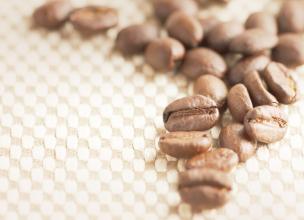On the causes and Solutions of extraction factors of Coffee beans after roasting
Originally, I was going to go directly into the implementation mode, but think about it or pull this article to the front first. this may make it easier to have a general understanding of different cooking methods and to clarify the relationship and causes of different flavors.
The extraction of coffee is nothing more than two things: "solubility" and "diffusion".
The longer the time, the more molecules dissolved, the more complete the diffusion.
Of course, you must think of another variable: temperature.
The higher the temperature, the higher the molecular activity, the higher the solubility, the faster the diffusion.
But everything has a time limit, and the longer the temperature, the higher the temperature. We have to find a balance between them, like the sweat point where you have to let the ball hit the racket net.
It's not bad if you miss it, but it just doesn't feel good.
Back to the dissolution rate ~
The process of brewing coffee is to dissolve thousands of chemicals in coffee, such as aromatics, oils, caffeine, and so on, into water, and not all of them are pleasant.
The first half of coffee extraction (strictly speaking, only 20% of the extraction rate)
It is rich in aromatic substances, coffee oils and other caramel-responsive crops, while the flavor behind is mostly astringent wood, so it is not "high solubility" or "complete extraction" is a good thing.
How to effectively extract the front segment and reduce the influence of the latter taste is the direction that every coffee maker is trying to do.
As in previous chemical experiments, in order to analyze the effect of one factor, all other factors must be controlled at a fixed value before the result will be of reference value.
We can sum up several trends:
1. When the coffee powder is more detailed, the larger the contact area is, the faster the extraction speed is.
two。 The longer the extraction time, the higher the solubility.
3. When the temperature is higher, the solubility is higher, the diffusion is greater, and the extraction speed is faster.
If you use the hand bubble type, add one more item.
4. The faster the flow rate, the lower the concentration.
If semantic condensation is used, then
5. When the pressure is higher, the solubility is higher and the extraction speed is faster.
This part does not take the evaluation of taste into consideration for the time being, assuming that the extraction rate we require is fixed at 20%.
Fix a way of cooking, such as syphon
Then the factors that we can adjust are reduced to the size of the powder, the extraction time, and if the water temperature is precisely controlled, we can experiment on how long it takes for grinding scale 1 and scale 3 to achieve the same extraction rate, and on the same basis, we can add taste to compare which of the two extraction methods has the best flavor.
You might say: what flavor does the same extraction rate compare to?
The same extraction rate means that the weight of the total substance dissolved by coffee powder is the same, but it does not mean that the weight ratio of dissolved ingredients is equal.
So if you keep looking at the number of extraction rate, you may get into a misunderstanding.
TDS (Total Dissolved Solids) also said the same thing, not to tell you that the extraction rate and TDS are meaningless. The meaning of these two numbers is a quantitative reference value for the slight difference of the structure under almost the same similar cooking conditions.
To speak vernacular, when you use the same cooking method, the same powder thickness, the same cooking time, you only adjust the water temperature of 3 degrees.
Under the condition of such a slight difference, the calculated and measured value will be related to the flavor, but only "which cup tastes better" will not be "this cup and that cup of garbage".
Return to the level of taste ~
Are these factors only related to the extraction rate?
Of course not!
Coffee is actually very slender, with slight adjustments that can change its flavor:
"Fine ← particles → coarse"
Rich ← flavor and clean →
"short ← time → long"
Light ← flavor → thick (excellent)
Monotonous ← flavor → miscellaneous flavor (lack)
"low ← temperature, high →"
Acid ← flavor → bitter
"slow ← flow rate → fast"
Rich ← flavor → clean (excellent)
Mixed flavor ← flavor → monotonous (lack)
These are simple dichotomies, each of which has its advantages and disadvantages, in addition to everyone's personal taste, but also takes into account the characteristics of beans and the degree of baking in order to find sweat point~.
Brew a satisfactory cup of coffee ~
Source:
The blog of coffee man Lu Xiansen
Important Notice :
前街咖啡 FrontStreet Coffee has moved to new addredd:
FrontStreet Coffee Address: 315,Donghua East Road,GuangZhou
Tel:020 38364473
- Prev

Brief introduction of 90 ninety plus to gain an in-depth understanding of the cultural development and knowledge of 90 + coffee beans
Recently, when I talked to a lot of people about 90 beans, I found that many people still don't know the naming, classification and grade of 90. In retrospect, when I first came into contact with 90, it took me some time to get a general idea of what the name of 90 was all about. I have to say that from concept to brand management, this is a very special company, but at the same time for the average consumer
- Next

Compare the acidity (sour taste) of coffee. Let's learn about the flavor characteristics of coffee beans.
1. Arabica has high acidity, while Robusta has low acidity. The acidity of washed beans is high while that of sun-dried beans is low. The acidity of light baking is high and that of deep baking is low. High acidity does not mean bright and low does not mean dull; 5. The sour taste of fast baking is relatively bright, but improper grasp will lead to acidity; slow baking sour taste is relatively soft, but improper grasp will lead to dull; 6. Made with high water temperature and relatively bright sour taste
Related
- What is the meaning of lactic acid fermentation with coffee bean treatment?
- How to judge the state of foam by sound?
- How does the latte pull out the unicorn pattern? Come to get for a little trick to improve the flower pull!
- Will flower pulling affect the taste of the latte?
- Do you know the history of coffee?
- The difference between honey treatment and sun washing what is raisin honey treatment?
- What kind of milk can a novice use to make coffee foam to keep the foam longer? The correct method and skills of milking tutorial sharing
- Why do washed coffee beans taste sour? Flavor characteristics of washed Coffee
- Introduction to the skill of how to practice the size and height of water injection around the circle of hand-brewed coffee
- How do beginners practice coffee flower drawing from scratch?

